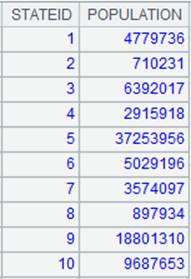rsa()
Description:
Perform RSA asymmetric encryption.
Syntax:
|
rsa(input,m) |
|
|
rsa(input,mod:e) |
Use random modulus/exponent keys to encrypt. |
Note:
The function uses RSA asymmetric encryption algorithm to encrypt/decrypt parameter input. The public key is for encryption, and the private is for decryption.
Parameter:
|
input |
Data to be encrypted/decrypted; Usually parameter input is BLOB type; also supports automatic string encoding. |
|
m |
Access key. |
|
e |
Key exponent. |
|
mod |
Key modulus. |
Option:
|
@d |
Perform decryption; here parameter input is the ciphertext to be decrypted. |
|
@k |
rsa@k(n) generates a key of length n and returns a sequence whose members are [public key m,private key m], where m is the BLOB type; n is the length of the key, which should be equal to or greater than 512 and whose default value is 2048. |
|
@km |
rsa@km(n) generates random modulus/exponent keys and return a sequence whose members are [key modulus mod, public key exponent e, private key exponent e], where mod and e are string type. |
|
@bkm |
rsa@bkm(n) generates random modulus/exponent keys and return a sequence whose members are [key modulus mod, public key exponent e, private key exponent e] where mod and e are BLOB type. |
Return value:
BLOB value/Sequence
Example:
|
|
A |
|
|
1 |
Hello World! |
|
|
2 |
=charencode(A1;"GBK") |
Generate a BLOB value using A1’s string. |
|
3 |
=rsa@k(512) |
Generate a sequence made up of the key whose length is 512 and whose members are [public key, private key]:
|
|
4 |
=rsa(A2,A3(1)) |
Use the public key in A3 to encrypt A2’s content. |
|
5 |
=rsa@d(A4,A3(2)) |
@d option works to decrypt A4’s content using the private key in A3. |
|
6 |
=charencode(A5;"GBK") |
Generate a string using A5’s BLOB value and return the result: Hello World! |
Use random modulus/exponent key to encrypt and decrypt:
|
|
A |
|
|
1 |
Hello World! |
|
|
2 |
=rsa@km() |
Use default value 2048 as parameter n is absent; @km options work to generate random modulus/exponent keys and return a sequence whose members are [key modulus, public key exponent, private key exponent]:
|
|
3 |
=rsa(A1,A2(1):A2(2)) |
Use the key modulus and public key exponent in A2 to encrypt A1’s content. |
|
4 |
=rsa@d(A3,A2(1):A2(3)) |
@d option works to decrypt A3’s content using the key modulus and privage key exponent in A2. |
|
5 |
=charencode(A4) |
Generate a string using A4’s BLOB value – use character set utf-8 by default, and return the result: Hello World! |

